Ask Ethan: Does light always move at the same speed?
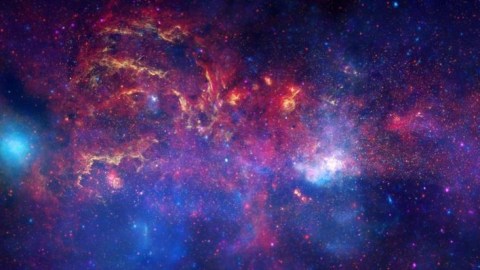
The speed of light is a universal constant, but that doesn’t necessarily mean that light always travels at that speed, does it?
“There was a young lady named Bright,
Whose speed was far faster than light;
She set out one day
In a relative way,
And returned on the previous night.” –A.H. Reginald Butler
No matter how fast you go, there’s always one thing you’ll never be able to catch: light. The speed of light is not only the fastest speed that anything in the Universe can travel, it’s regarded as a universal constant. Whether we shine a flashlight, look at the Moon or Sun, or measure a galaxy from billions of light years away, the speed of light is the one thing that never changes. But is that really true? That’s what Violet Brettschneider wants to know:
Does light always move at the same speed? If it is slowed down by something, will is stay slower after it is no longer being slowed down? Will [it] speed back up to the speed of light?
Let’s start with what light is at a fundamental level: a particle.
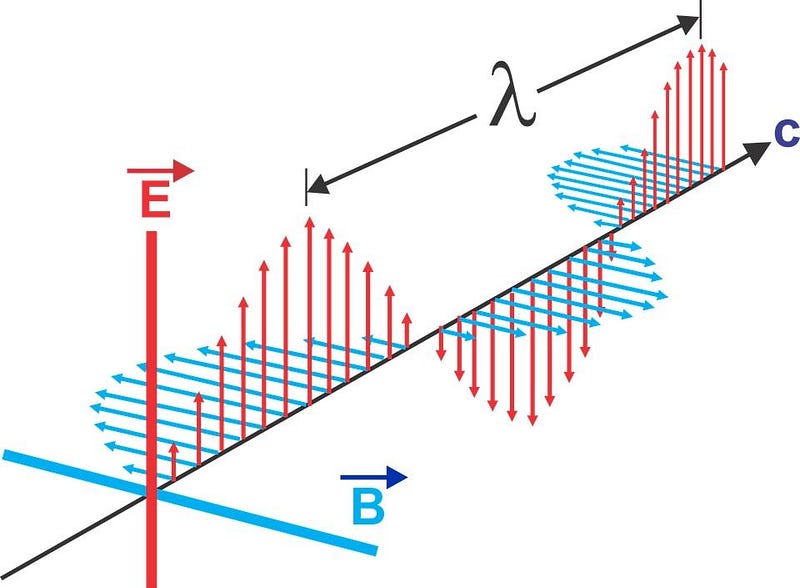
It may not look like a particle when you see it coming from a light source like a bulb, a flashlight, a laser pointer, or even the Sun, but that’s because we’re not well-equipped to see individual particles. If we use electronic photodetectors instead of our eyes, we discover that all the light in the Universe is made up of the same type of particle: the photon. It has a few properties that are the same between all photons:
- its mass (which is 0),
- its speed (which is always c, the speed of light),
- its spin (which is always 1, a measure of its intrinsic angular momentum),
and one very important one that varies: its energy. Violet light has the most energy of any photon that’s visible to human eyes, while red has the least energy of any visible photon. At even lower energies are infrared, microwave, and radio photons, while ultraviolet, X-ray, and gamma ray photons can be found at higher energies.
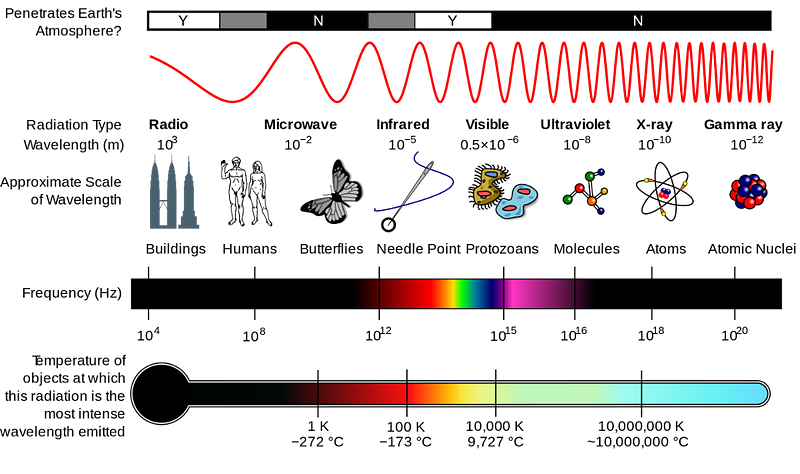
Through the vacuum of space, no matter what their energy is, they always travel at the speed of light. It doesn’t matter how quickly you chase after or run towards light, either; that speed you view it traveling at will always be the same. The thing that shifts, instead of its speed, will be the light’s energy. Move towards light and it appears bluer, boosting it to higher energies. Move away from it and it appears redder, shifted to lower energies. But none of that, no matter how you move, how you make the light move, or how you change the energy, will cause the speed of light to change. The highest-energy photon and the lowest-energy photon ever observed both travel at exactly the same speed.
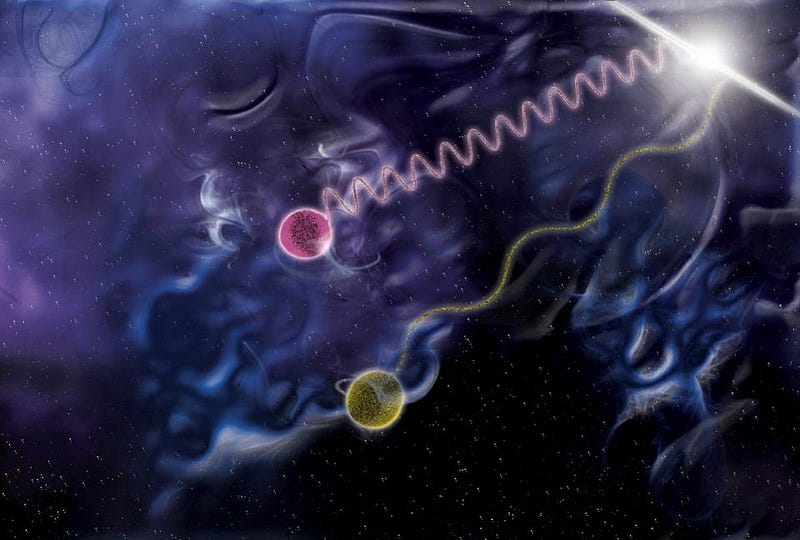
But if you’re willing to step outside of a vacuum and into a material, it is possible to slow light down. Any material that’s transparent to light will have those photons travel through it, including water, acrylic, crystals, glass, and even air. But because there are charged particles in these materials — electrons in particular — they interact with the photons in such a way that they slow them down. Light, even though it isn’t charged, behaves like a wave. As a photon moves through space, it exhibits oscillating electric and magnetic fields, and can interact with charged particles. These interactions slow it down, and cause it to move at a speed less than the speed of light as long as they’re in a material.
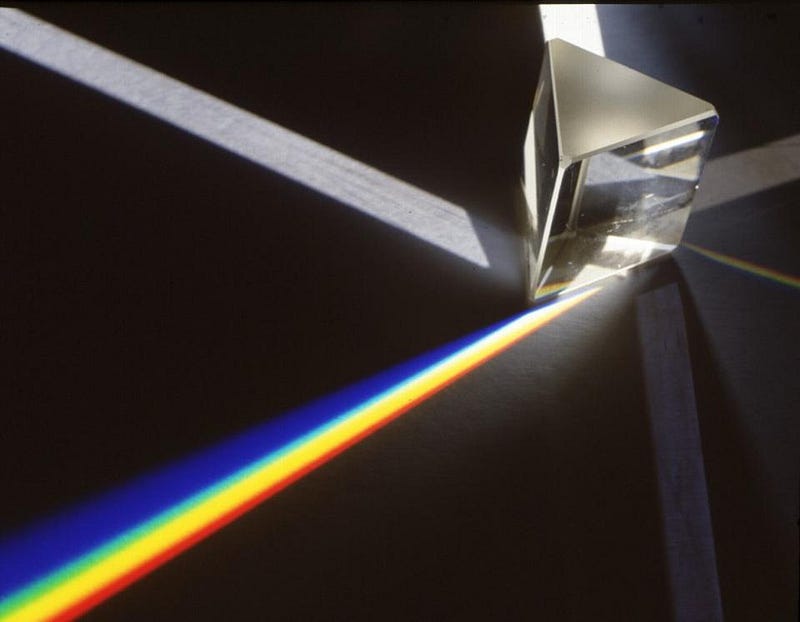
Different photons have different energies, which also means their electric and magnetic fields oscillate at different rates. While the speed of all different types of light is the same in a vacuum, those speeds can be different in any sort of medium. Shine white light (made up of all the colors) through a drop of water or a prism, and the more energetic photons will slow down even more than the less energetic ones, causing the colors to separate.

This is how shining light through water droplets creates a rainbow, because photons of different energies interact with the charged particles in a medium (and slow down) by different amounts.
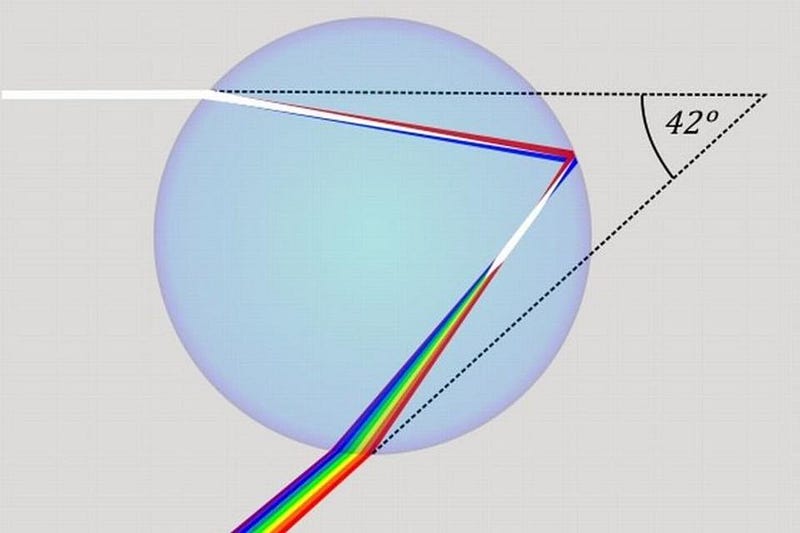
What’s important to remember, though, in all of this, is that nothing is changing about the light itself. It isn’t losing energy; it isn’t changing its fundamental, intrinsic properties; it isn’t transforming into anything else. All that’s changing is the space around it. When that light exits the medium and goes back into vacuum, it goes back to moving at the speed of light in vacuum: 299,792,458 meters per second. In fact, the very definition that we have of both distance and time — what defines a “meter” or a “second” — comes from light itself. Atoms can absorb or emit light, depending on how the electrons within an atom transition.
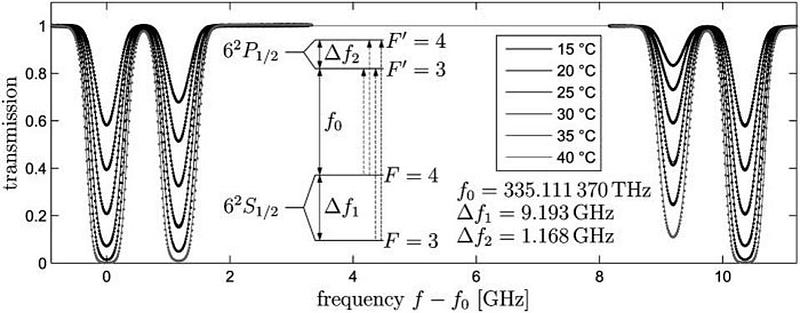
Cesium, the 55th element on the periodic table, has 55 electrons in a single, stable, neutral atom. The first 54 electrons typically live in the lowest energy state, but the 55th has two possible energy levels it can occupy that are extremely close together. If it transitions from the slightly higher one to the slightly lower one, that energy goes into a photon of a very particular, well-defined energy. If you take 9,192,631,770 cycles of that photon, that’s how we define one second. If you take the distance it travels in 30.663319 cycles (which is 9,192,631,770 divided by 299,792,458), you get the definition of one meter.
This teaches us something phenomenally profound: as long as atoms are the same everywhere in the Universe, then our definitions of time, length, and the speed of light will never change, no matter where or when we look in the Universe.
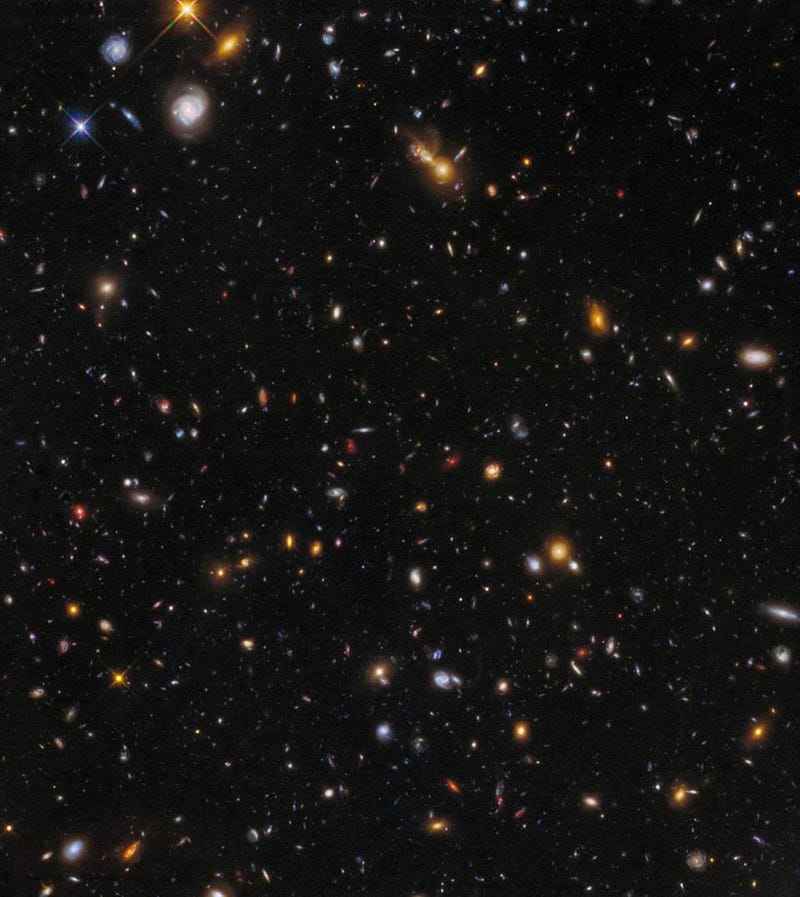
So what do we learn, putting all this together?
- Light, no matter how high-or-low in energy, always moves at the speed of light, so long as it’s traveling through the vacuum of empty space.
- Nothing you do to your own motion or to the light’s motion will change that speed.
- By passing that light into a non-vacuum medium, you can change its speed so long as it’s in that medium.
- Light of different energy will change its speed by slightly different amounts, depending on the properties of that medium.
- Once you leave that medium and go back into a vacuum again, that light goes back to moving at the speed of light.
- And to the best of our knowledge and measurements, the speed of light has the same value of 299,792,458 m/s at all times and all locations in the Universe.
In many ways, light is the simplest particle in the Universe. Even though it always moves at the speed of light, it doesn’t always move through completely empty space. As long as there’s matter in the Universe that’s transparent to light, you won’t be able to avoid slowing it down. But as soon as that light heads back into empty space again, it’s back to the speed of light in vacuum, with every photon moving as though it had never moved at any other speed at all!
Send in your Ask Ethan questions to startswithabang at gmail dot com!
Ethan Siegel is the author of Beyond the Galaxy and Treknology. You can pre-order his third book, currently in development: the Encyclopaedia Cosmologica.




